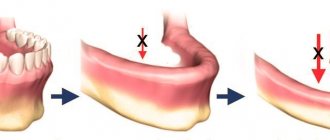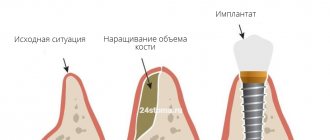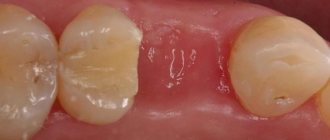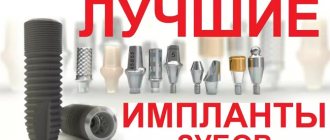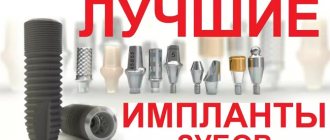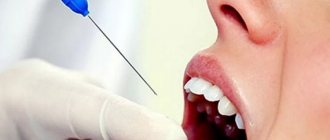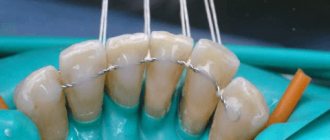We lose not only teeth, but also bone tissue
We lose not only teeth, but also bone tissue. Its atrophy occurs after tooth extraction, its long absence, as a result of maxillofacial injuries, with certain anatomical features and congenital anomalies, as well as with a number of systemic diseases. In each specific case, the problem may be insufficient thickness (width) or height of the bone of the alveolar process; in rare cases, there is a deficiency of bone tissue in both height and width.
Bone regeneration before implantation
Dental implant placement has become a common practice in modern dentistry. But it is not uncommon for a doctor to puzzle a patient with an unexpected proposal to first go through the process of restoring jaw bone tissue. Do not be upset if you are one of those patients who cannot have an implant installed immediately without bone grafting. And in no case should you look for doctors who will agree to follow your impatience and not carry out restoration of the jaw bone tissue - in the end this will end in even bigger problems.
Which material is better?
Recently, operations to transplant one's own bone are used less frequently, since taking the material is another operation, a load on the body and general stress. However, dentists do not exclude this method, but are gradually moving to BMR technologies (based on Bone Morphogenetic Protein), which do not require the collection of a donor composition. We are talking about a group of morphogenetic protein tissue growth stimulators that activate processes, and after some time a sufficient volume of bone is formed. The composition is based on molecules that attract natural cells to areas where it is necessary to compensate for bone deficiency. There are no synthetic components or donor bone blocks - exclusively natural mechanisms of tissue regeneration.
How is bone volume restored?
To restore the volume of bone tissue in a very thin area at the site of the dental alveolus, bone is split and the cavity is filled with bone tissue (an auto-, allo-, or synthetic graft is used). Then, after bone regeneration is complete, the implant itself can be installed. When it is necessary to increase the height of the bone, simultaneously with the implantation, bone tissue is increased with a special preparation that replaces it. A membrane coating is applied on top. The alveolar bone with various extension designs should heal and strengthen within 4–6 months, after which an artificial tooth (ceramic or metal-ceramic crown) can be installed.
To restore jaw bone tissue, an autogenous graft is used (bone is taken from the patient himself from another part of the jaw); allograft (donor bone is taken from another person) or synthetic materials that mimic bone (they contain calcium and phosphorus).
Work examples:
All works
Complete restoration of the upper jaw using a zygomatic implant
Stage III periodontal disease: complex dental implantation Restoration of both jaws in 4 days
Sinus lifting with simultaneous implantation
Implantation of both jaws with ROOTT implants for stage II periodontal disease
Restoration of two jaws with one-stage implantation using sinus lift
Sinus lift with simultaneous implantation
All works
Sign up for a consultation
three ROOTT specialists + diagnostics as a gift
Is bone restoration necessary after tooth extraction?
It is imperative to remember that with any tooth extraction, even if there are no signs of periodontitis or other diseases leading to atrophy, the bone tissue at the site of the dental alveolus atrophies quite quickly (within several months). Restoration of bone tissue after tooth extraction is mandatory.
A serious bone defect of the jaw can also appear with the development of purulent complications - osteomyelitis, which occurs after complex tooth extraction (for example, removal of an unerupted or impacted tooth, removal of bone tumors). Both the operation itself, which injures the bone, and postoperative purulent complications lead to bone tissue atrophy. In such cases, in addition to filling the bone defect with a graft, various agents are used to stimulate osteogenesis. For example, osteoplastic biocomposite materials (Kollapan), photodynamic therapy, electric vibration massage.
Foods containing vitamin D
| Product | Serving Size | Vitamin D per serving (IU) | Calories per serving |
| Cod liver oil | 1 tablespoon | 1360 | 123 |
| Salmon and sockeye salmon, canned, without liquid | 4 oz (115 g) | 953 | 189 |
| Sea bass, Atlantic, cooked | 4 oz (115 g) | 66 | 109 |
| Tuna, light, canned in water, drained | 4 oz (115 g) | 53 | 97 |
| Sardines, canned in oil, without liquid | 2 pcs. | 46 | 50 |
| Orange juice fortified with vitamin D* | 1 cup (8 oz (240 ml)) | 100 | 117 |
| Low-fat milk fortified with vitamin D | 1 cup (8 oz (240 ml)) | 117 | 102 |
| Egg including yolk | 1 PC. (large) | 44 | 78 |
| Shiitake mushrooms, dried | 4 things. | 23 | 44 |
| Chanterelle mushrooms, fresh | ½ cup | 114 | 21 |
*Check product labels as calcium levels may vary.
Source: USDA National Nutrient Database for Standard Reference
Can be found at https://ndb.nal.usda.gov
to come back to the beginning
Restoration of bone tissue in periodontitis and periodontal disease
Almost every adult faces the problem of losing molars. The most common reason leading to tooth extraction is periodontitis (progressive destruction of the structure of the alveolar process of the jaw). This disease is very common; its initial signs (bleeding gums, exposure of the neck of the tooth) can be found in everyone after 40–50 years. Less common is periodontal disease, which develops in the absence of normal blood supply to the periodontal tissues. For example, with diabetes and atherosclerosis. Restoration of bone tissue during periodontitis or periodontal disease is required when atrophy of the bone tissue of the alveolar processes of the jaws occurs.
Restoration of bone tissue after implant removal and surgery
Unsuccessful implant installation (the doctor’s choice of a very thin or short implant, its incorrect installation without taking into account the bite) leads to tissue inflammation - peri-implantitis, loosening, breakage or rejection of the implanted tooth. In such cases, the implant fragments are removed from the bone, and then a major reconstruction of the alveolar process is required.
Peptides for bone tissue restoration in dentistry
There are peptide bioregulators that specifically stimulate the regeneration of jaw bone tissue and promote bone formation. They are also called odontotropic regulatory peptides. Peptides for bone tissue restoration in dentistry are used both for treatment and for preventive purposes. First, you must definitely visit a dentist and, on his advice, choose a drug - balm, capsules or toothpaste. For example, Revidont toothpaste contains three types of peptide complexes (A-3, A-4, A-6) and superoxide dismutase. The therapeutic effect of the paste includes strengthening the structure of teeth, normalizing microcirculation in the oral cavity, restoring bone tissue and having an anti-inflammatory effect.
Folk remedies for treating illness
Regular rinsing of the mouth with special solutions or decoctions of medicinal plants is an excellent remedy for strengthening the gums. For this purpose, you can use decoctions of oak bark, eggplant peel, and horseradish. The most popular herbs for strengthening gums are chamomile, sage, St. John's wort, mint, and burdock.
Four folk recipes for rinsing to strengthen gums:
- Tea tree oil is an effective remedy for strengthening weak gums due to its ability to heal wounds and fight bacteria. To prepare a solution that needs to be used to rinse the mouth, take 2 drops of oil and half a glass of clean water.
- One of the popular folk recipes is a tincture made from a mixture of linden blossom and oak bark in equal proportions. To prepare it, just take a teaspoon of each component and pour 2 cups of boiling water over them. You should rinse your mouth with the resulting product after each meal.
- You can disinfect the oral cavity with cognac. To do this, you need to rinse it with a small amount of drink.
- Burdock decoction. The product should be used at least twice a day. To prepare it, you need to boil a tablespoon of the herb in 500 milliliters of water, then cool and strain through cheesecloth or a sieve.
To strengthen the gums and teeth, it is recommended to massage with the thumb and forefinger. The gums are treated with vertical massaging movements - from one tooth to another. Each section should be worked for 20 seconds. To increase efficiency, you can carry out the procedure by first dipping your fingers in honey or tea tree oil.
To strengthen the gums, it is recommended to use lotions:
- Plantain juice helps a lot. A cotton or gauze swab is moistened in it and applied to the gum.
- A decoction of young pine needles. To prepare the lotion, you need to boil 3 tablespoons of needles in 200 milliliters of water for 10 minutes. After this, the product is infused for at least 7 hours. A cotton swab dipped in the broth is applied to the sore gums.
Is it possible to restore bone tissue in osteoporosis?
Reduced bone density, or osteoporosis, is more common in women, especially postmenopausal and postpartum women, and in people of both sexes with hormonal imbalances. In such cases, you need to consult a therapist and endocrinologist and take prescribed medications. Restoration of bone tissue in osteoporosis is complicated by systemic reasons for its decrease throughout the human skeleton. However, modern technologies and materials used to restore bone during implantation make it possible to successfully implant new artificial teeth, saving patients from wearing removable dentures.
Calcium-rich foods
| Product | Serving Size | Calcium per serving (milligrams) | Calories per serving |
| Dairy | |||
| Yogurt without additives, low fat | 1 cup (8 oz (240 ml)) | 265 | 150 |
| Cheddar cheese | 1½ oz (45 g) | 307 | 171 |
| Gruyère cheese | 1½ oz (45 g) | 430 | 176 |
| Parmesan cheese | 1½ oz (45 g) | 503 | 167 |
| Low fat milk | 1 cup (8 oz (240 ml)) | 305 | 102 |
| Milk, whole | 1 cup (8 oz (240 ml)) | 276 | 149 |
| Dairy-free products (as an alternative) | |||
| Soy milk without additives, fortified with calcium | 1 cup (8 oz (240 ml)) | 301 | 80 |
| Plain rice milk fortified with calcium | 1 cup (8 oz (240 ml)) | 283 | 113 |
| Almond milk, vanilla, fortified with calcium | 1 cup (8 oz (240 ml)) | 451 | 91 |
| Seafood | |||
| Sardines, canned in oil, with bones, without liquid | 2 pcs. | 92 | 50 |
| Salmon and sockeye salmon, canned, without liquid | 4 oz (115 g) | 263 | 189 |
| Sea bass, Atlantic, cooked | 4 oz (115 g) | 39 | 109 |
| Steamed mussels | 4 oz (115 g) | 37 | 195 |
| Fruits and vegetables | |||
| Collards, cooked | ½ cup | 134 | 31 |
| Turnip leaves, cooked | ½ cup | 104 | 29 |
| Kale, cooked | ½ cup | 47 | 18 |
| Bok choy (Chinese cabbage), fresh | 1 cup | 74 | 9 |
| Brussels sprouts | ½ cup | 28 | 28 |
| Figs, fresh | 2 pcs. (average) | 35 | 74 |
| Nuts, beans, beans and soybeans | |||
| Almond | 1/4 cup | 96 | 207 |
| White beans, canned | ½ cup | 96 | 150 |
| Edamame (soybeans), cooked | ½ cup | 49 | 95 |
| Tofu, firm, prepared with calcium sulfate* | ½ cup | 253 | 88 |
| Other food and drinks | |||
| Fortified, ready-to-eat cereal flakes (various)** | ¾ to 1 cup | 250–1000 | 100–210 |
| Orange juice fortified with calcium** | 1 cup | 500 | 117 |
| Oatmeal porridge without additives, instant, enriched** | 1 packet after cooking | 98 | 101 |
| Mineral water (e.g. San Pellegrino®, Perrier®) | 1 cup (8 oz (240 ml)) | 33 | 0 |
| Basil, dried | 1 teaspoon | 31 | 3 |
*Calcium content is based on tofu prepared with calcium salt. Tofu prepared with other salts does not contain significant amounts of calcium.
**Check product labels as calcium levels may vary.
Source: USDA National Nutrient Database for Standard Reference
Can be found at https://ndb.nal.usda.gov
to come back to the beginning
